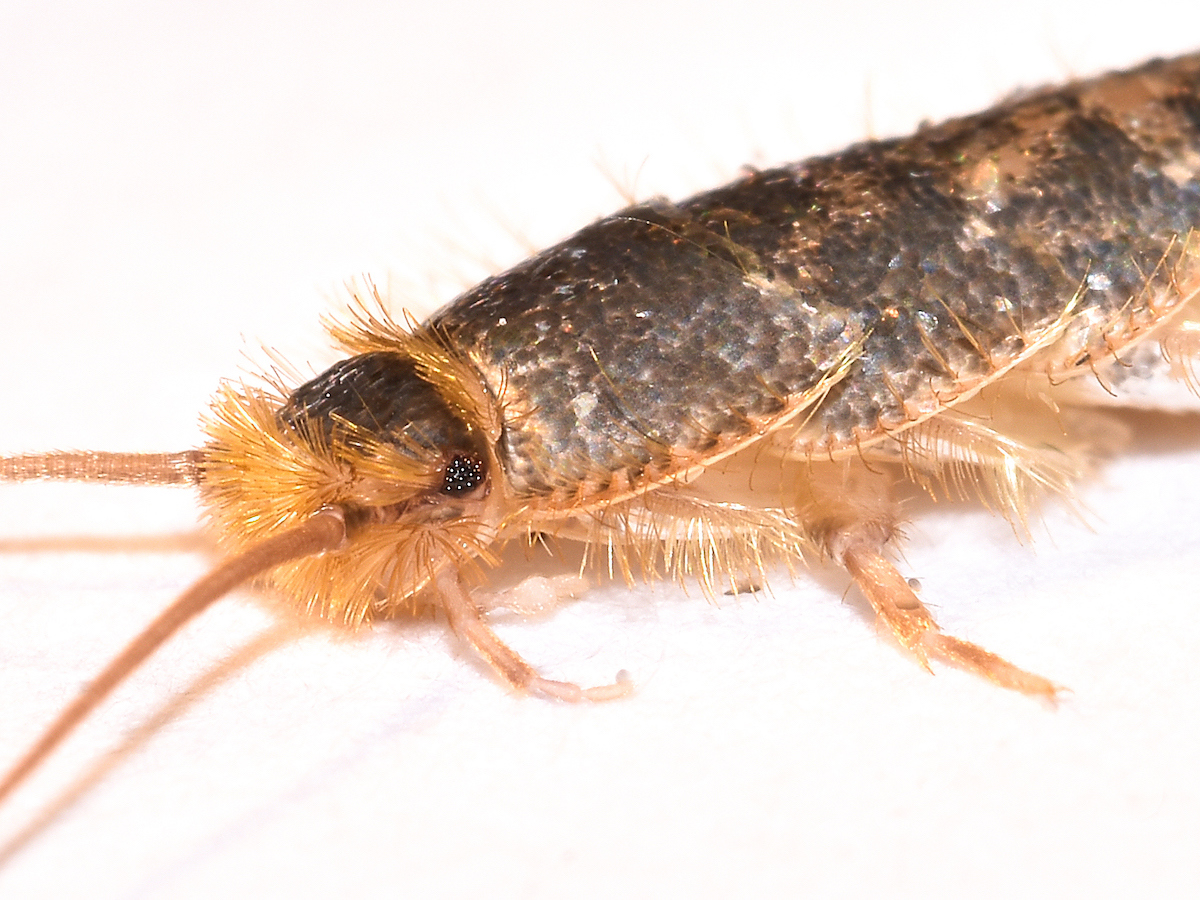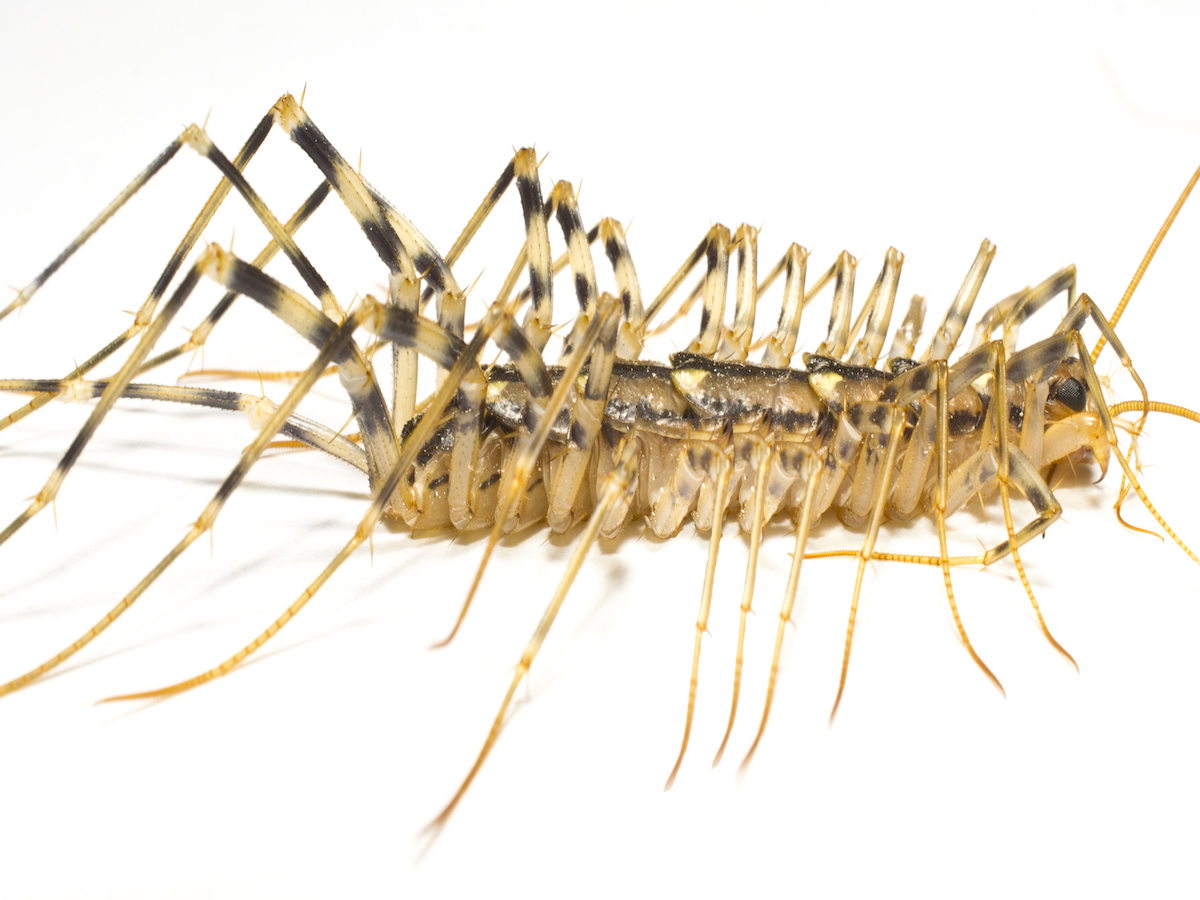Silverfish Lespisma sacchrina (Linnaeus)

Silverfish Identification
Color: Silver to brown
Size: ¾ inches
Legs: 6
Antennae: Yes
Shape: Oval, elongated
Region: Found throughout U.S.
What is a Silverfish Bug?
Silverfish get their name from the bug’s silvery, metallic appearance and fish-like shape and movements. Silverfish are also known as “bristletails” because of their three long, bristle-like or tail-like appendages on the rear end of their body. Silverfish are found throughout the U.S. and are typically seen in moist, humid areas in the home, such as bathrooms, basements and attics. They tend to hide their presence from humans, which means any damage they have caused could go unnoticed as well. Read on to find out more about silverfish control and how to get rid of silverfish.
What Do Silverfish Look Like?
If you’ve noticed a silvery, metallic bug in your home, it’s likely you’ll need to contact a pest control professional to get rid of silverfish. Adult silverfish have a body length of about ½-3/4” (12-19 mm) not including the tail. They have a flattened body and their shape is often compared to a teardrop, carrot or fish, tapering from head to rear and generally covered with scales.
Silverfish are named after their fish-like shape, silver color and movements. They also have threadlike antennas and small compound eyes that are widely separated. Immature silverfish look similar to adults, except for size and their scales appear with the third or fourth molt.
Silverfish have no wings, but are able to run very fast.
Looking to prevent or get rid of a silverfish infestation? The key to silverfish control is thoroughly inspecting preferred habitat areas and where appropriate food materials are present. If the infestation is localized on the inside, one can assume that it is recent and was either brought in via infested items or represents a recent invasion from the outside.
If the infestation is widespread, then attention should be directed to the outside. Anything stored against or near the house’s exterior must be moved or removed since silverfish can easily climb up walls and find entrance around window and door frames, utility pipes and vents. Shake roofs should also be cleaned and sealed every other year.
Additional silverfish control tips include:
- Get a dehumidifier for your home
- Repair leaky pipes and drains
- Eliminate or repair any moldy or wet wood.
Additionally, don't keep old books and magazines in areas where silverfish are usually found like basements, attics and garages. And it's important to keep food items such as flour and sugar in tight containers.
If a silverfish bug infestation is suspected or found, it’s best to contact a licensed pest control professional to properly inspect the home and recommend the appropriate treatment method.
Silverfish are not considered a threat to humans, as they do not bite or spread disease. It is unlikely that a silverfish will physically harm you.
However, they can cause harm to personal belongings, especially those made out of paper.
Silverfish are known to infest items such as wallpaper, books and envelopes, so these materials can become damaged over time as a result of an infestation. These bugs can also feed on glue and clothing, as well as food items such as rolled oats and flour.
Silverfish are mainly a nuisance pest, versus a physical threat. But it is because they can cause property damage that silverfish control is so important if you are dealing with an infestation.
Silverfish move fast and are good climbers. They can survive for weeks without food or water but require a high humidity environment of 70 to 90 percent. They are nocturnal and prefer to hide or rest in tight cracks or crevices during the day.
Silverfish usually feed on paper items, glue, clothing and food items, such as flour and rolled oats. They prefer proteins to carbohydrates and are cannibalistic — their favorite protein meals include dried beef and dead or injured of their kind.
The silverfish female lays about one to three eggs per day, placing them in cracks, under objects or left exposed. Developmental time is three to four months under favorable conditions of 72-90 degrees F and at least 50-75 percent relative humidity. Otherwise, it may require up to two to three years. The majority of silverfish live up to three years.
Silverfish are found throughout the U.S. and are typically seen in moist, humid areas in the home, such as bathrooms, basements, and attics.
Silverfish prefer areas of room temperature (70-85 degrees F/21-29 degrees C). They can be found almost anywhere in a house including living rooms, bedrooms, bathrooms, attics, basements, garages and shake roofs. In fact, shake roofs are excellent breeding sites for silverfish during the warmer months, as they have an abundance of moisture, cellulose, starch and dead insects. From there, they can easily gain entrance and move through the insulation to enter a home.
Silverfish are also known to infest commercial structures such as offices, stores and libraries. They are often introduced into buildings via cardboard cartons of books and papers from an infested location. They will roam quite some distance while searching for food, but once they find a satisfactory food source, they remain close to it. Within structures, they will breed in a variety of areas, including wall voids, in/under the subflooring, attics, etc.
Keep an eye out for feeding marks, although they may be irregular whether they are holes, notches along an edge, or surface etchings. Yellow stains, scales and/or feces (tiny black pepper-like pellets) may also be seen on infested materials.
These silverfish bugs can typically be found in humid, moist areas of the home including basements, attics and bathrooms. People have noticed silverfish when they come down on ceiling soffits and/or drop from skylights and canister light fixtures in the ceiling, likely entering through shake roofs.
If you notice a silverfish problem, contact a licensed pest control professional. They will conduct a thorough inspection to identify the full extent of the problem. Once the situation is properly identified, the appropriate control measures can be taken.
You can find a certified pest professional near you with the helpful zip code search below.






